St. Michael’s Hospital performs Toronto’s first robotic mitral valve repair
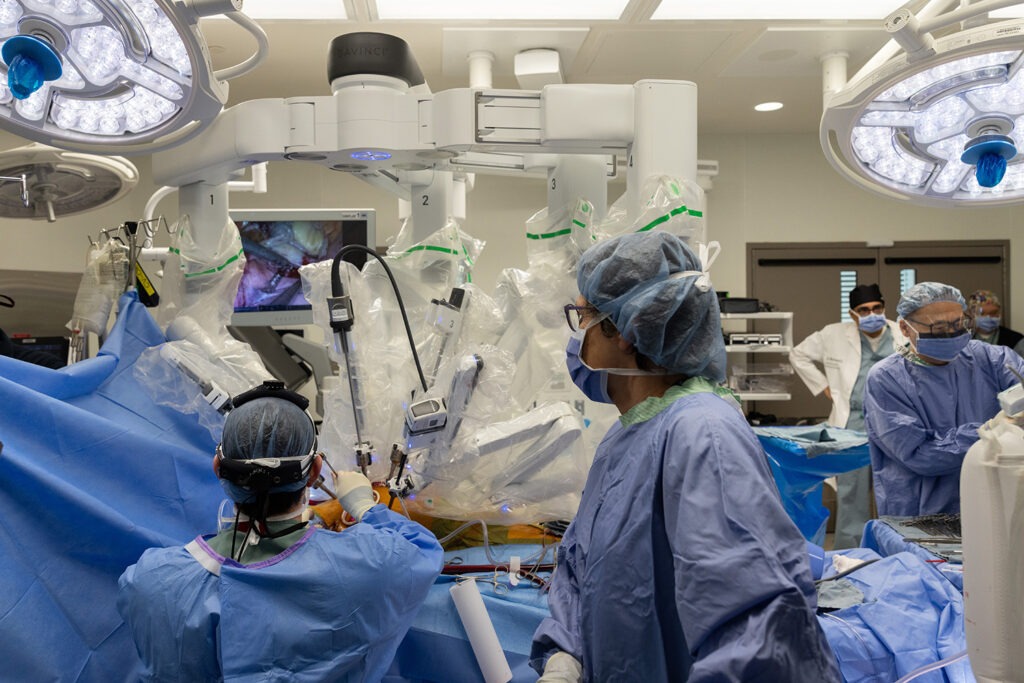
In a groundbreaking milestone for cardiac surgery, St. Michael’s Hospital has become the first in Toronto to successfully perform a robotic mitral valve repair. This achievement places the hospital among a select few in Canada offering this advanced, minimally invasive procedure.
A leap forward in cardiac surgery
The surgery took place in St. Michael’s Hospital’s Schroeder BRAIN&HEART Centre, where a highly coordinated team of surgeons, anesthesiologists, nurses, and perfusionists worked seamlessly to repair a patient’s mitral valve using state-of-the-art robotic technology. Global News highlighted the achievement in their national broadcast.
St. Michael’s Hospital, a site of Unity Health Toronto, offers world class specialty programs for the most complex and urgent cases, including minimally invasive cardiac surgery and pioneering robotics in neurosurgery, stroke care and more.
“We have been dedicated to advancing our minimally invasive cardiac surgery program over the past four years, and the introduction of a robotic platform is a significant step forward,” said Dr. Gianluigi Bisleri, Director of Minimally Invasive Cardiac Surgery in the Heart, Lung, and Vascular Program. “This technology enhances precision, reduces patient trauma, and improves recovery times.”
Enjoying this story? Sign up for the Unity Health Toronto newsletter, a monthly update on the latest news, stories, patient voices and research emailed directly to subscribers.
Precision and innovation in action
Working as a team, Cardiac Surgeon Dr. Daniel Burns stood by the patient directing the procedure’s progress, while Bisleri — the Joseph Vitale and TLN Media Group Chair in Minimally Invasive Cardiac Surgery — operated the robot from a nearby console. The robot’s instruments, introduced through small chest incisions, translated Bisleri’s precise hand movements into delicate, controlled actions within the patient’s chest.
The robotic system provides a magnified, high-definition view of the heart, allowing for meticulous surgical precision.
“The clarity is astounding,” remarked Burns, describing the enhanced visibility of the mitral valve. “Additionally, the wrist action of the robotic console allows improved dexterity when completing the valve reconstruction.”
Having both surgeons involved in the procedure facilitates discussion on repair execution, as well as support for completion of the repair itself.
Compared to traditional open-heart surgery—which requires dividing the breastbone—robotic mitral valve repair results in smaller incisions, less trauma, shorter hospital stays, and faster recoveries. “This is a game-changer, particularly for the crucial first weeks of healing,” Burns noted. “Compared to a conventional approach, we expect the patient to return to normal activities by about two weeks after the procedure, much earlier than with a conventional approach.”
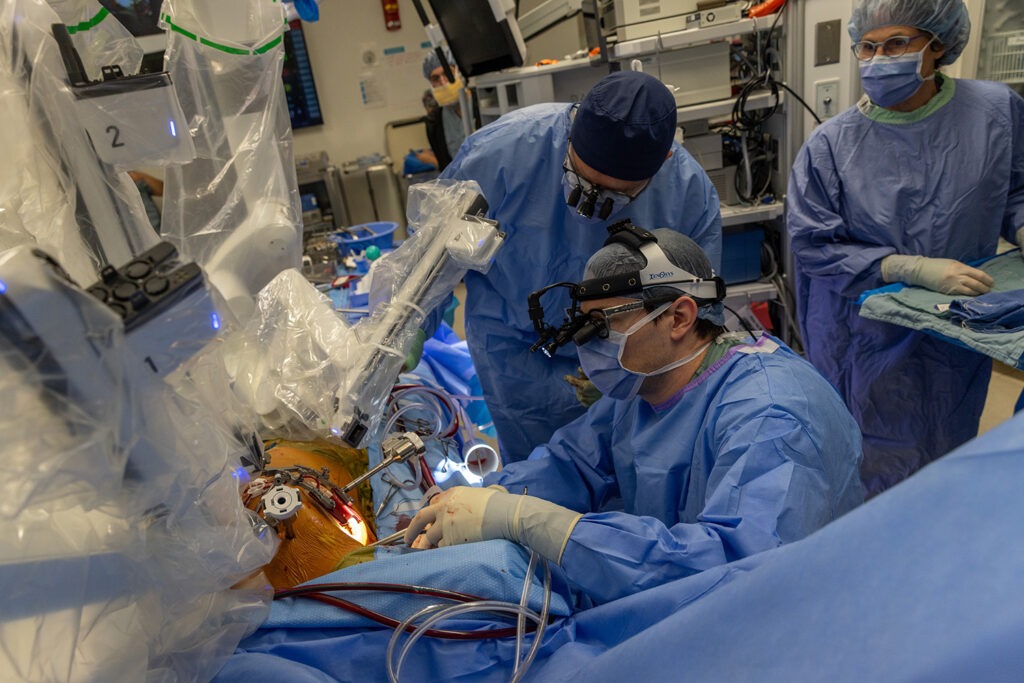
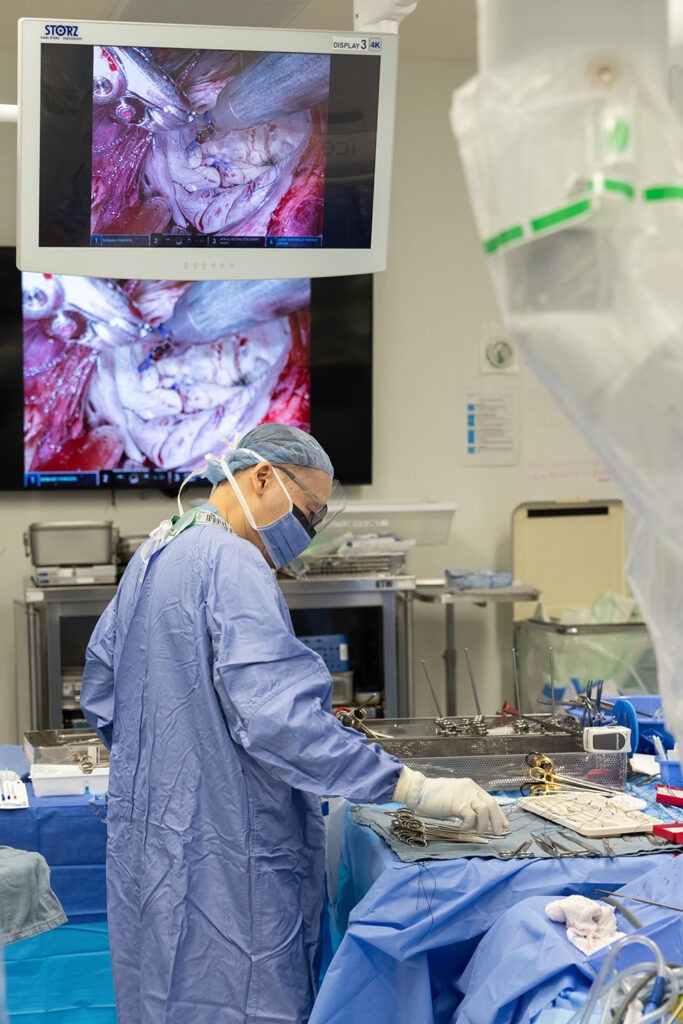
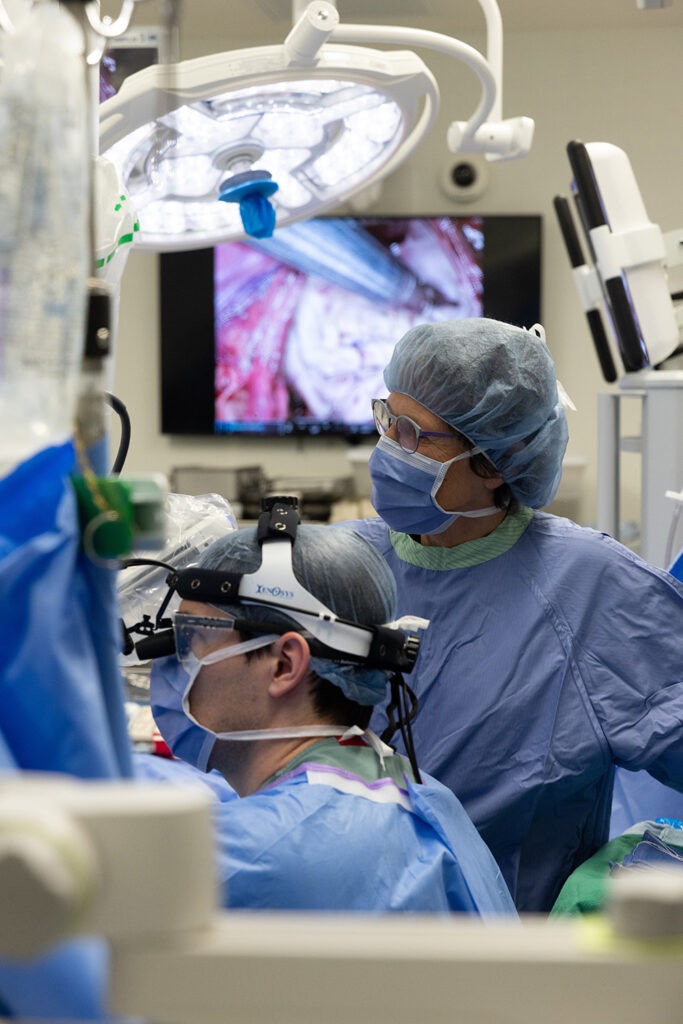
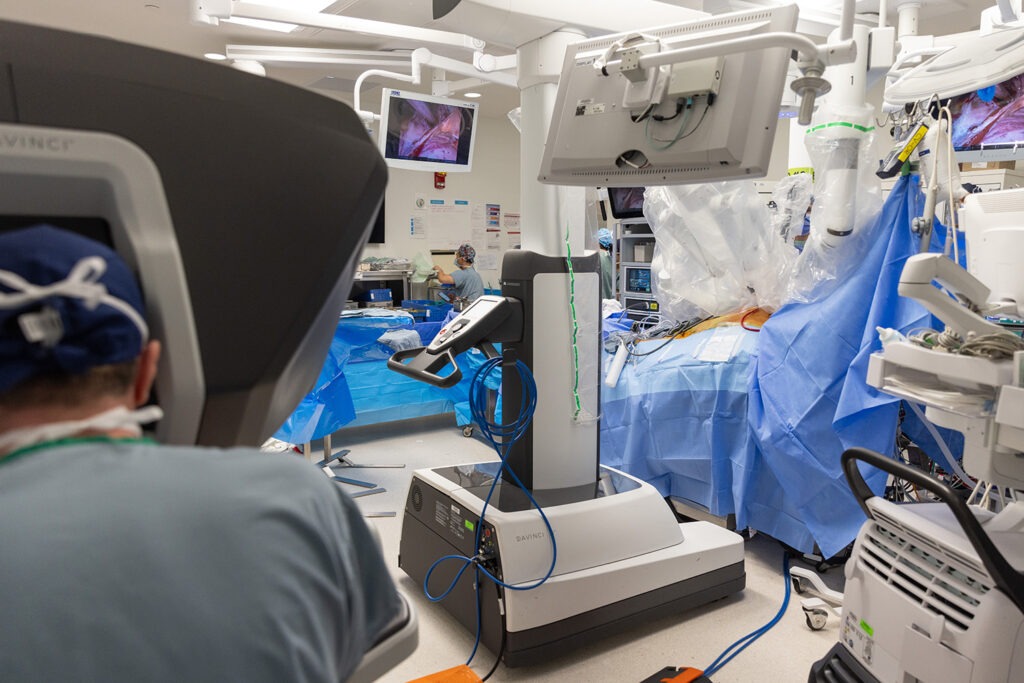
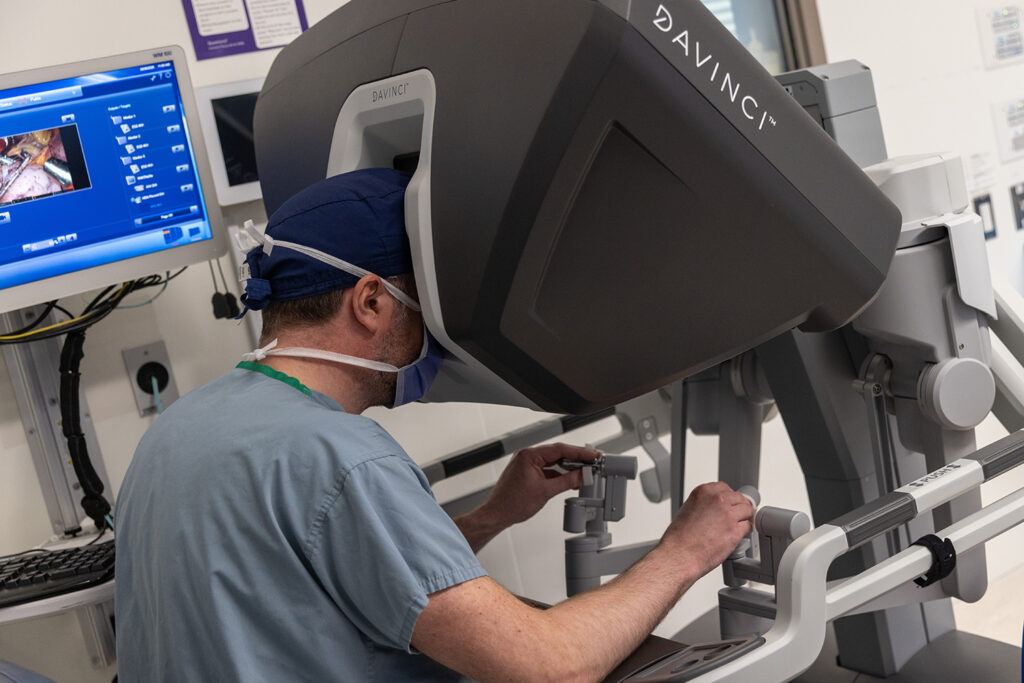
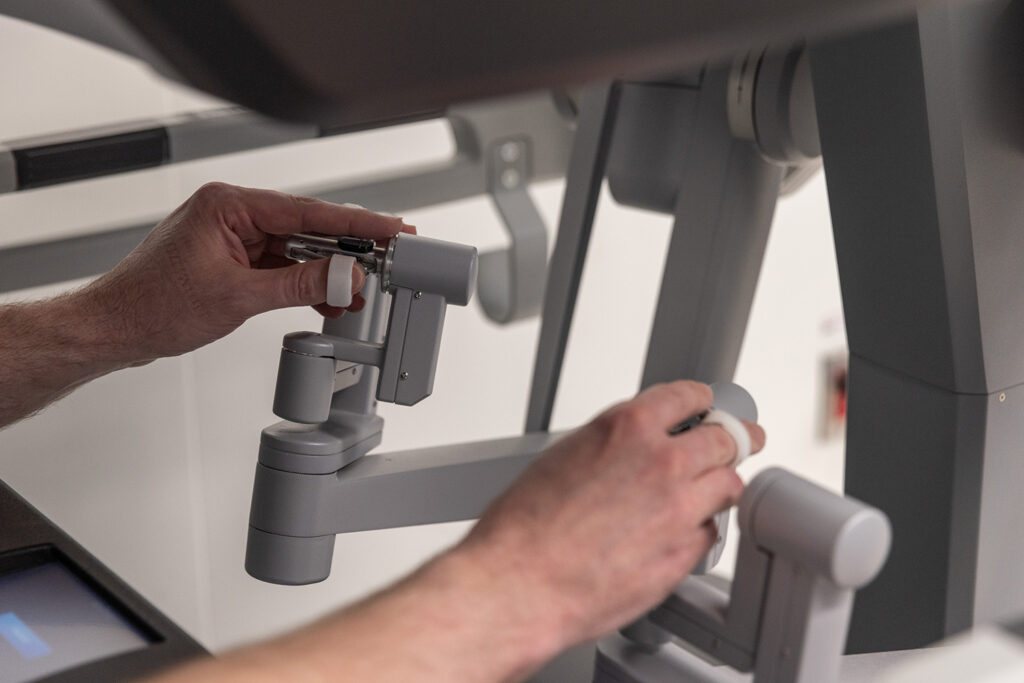
A collaborative effort
The successful introduction of this robotic procedure followed months of rigorous preparation, training, and simulations. The team carefully adapted their workflows, refining every aspect—from optimal equipment placement in the OR to managing additional surgical instruments and cables.
Additionally, the combined robotic expertise from both Bisleri and Burns allowed a seamless transition to the robotic platform. “Coming from a busy robotic practice, it has been a delight to help grow and develop this program with the team at St. Michael’s Hospital, and I look forward to this program’s future,” said Burns.
“It truly takes a village,” said Registered Nurse Sarah Lam, emphasizing the teamwork required to integrate this cutting-edge approach safely and effectively.
To ensure the highest level of patient safety, St. Michael’s has structured its robotic program with multiple specialists available at every stage. “This setup allows us to operate as a cohesive, adaptable unit, ensuring a safe and predictable approach to these complex procedures,” added Bisleri.
Going forward, Bisleri and Burns plan to work as a unit, with both taking on the bedside and console roles respectively, supporting the development of a true surgical robotics team.
Looking ahead
Four hours after the surgery began, the operation concluded successfully, with the patient expected to return home within days.
“This marks a pivotal moment for St. Michael’s Hospital’s Heart, Lung and Vascular Program,” said Bisleri.
“We have built a team capable of tackling the most challenging cardiac cases, and with this robotic technology, we are redefining how minimally invasive heart surgery is performed. As one of Canada’s highest-volume cardiac centers, we are committed to expanding our robotic program and bringing its benefits to more patients.”
This milestone underscores St. Michael’s Hospital’s leadership in innovation and its ongoing commitment to improving patient care through cutting-edge technology.
This procedure was possible with the support of donors Walter and Maria Schroeder and the Schroeder Family Foundation, Joe Vitale, Aldo di Felice, Canadian Italian Business Professionals Association, Ruggiero Family Foundation, St. Michael’s Foundation’s President’s Council, and so many others.
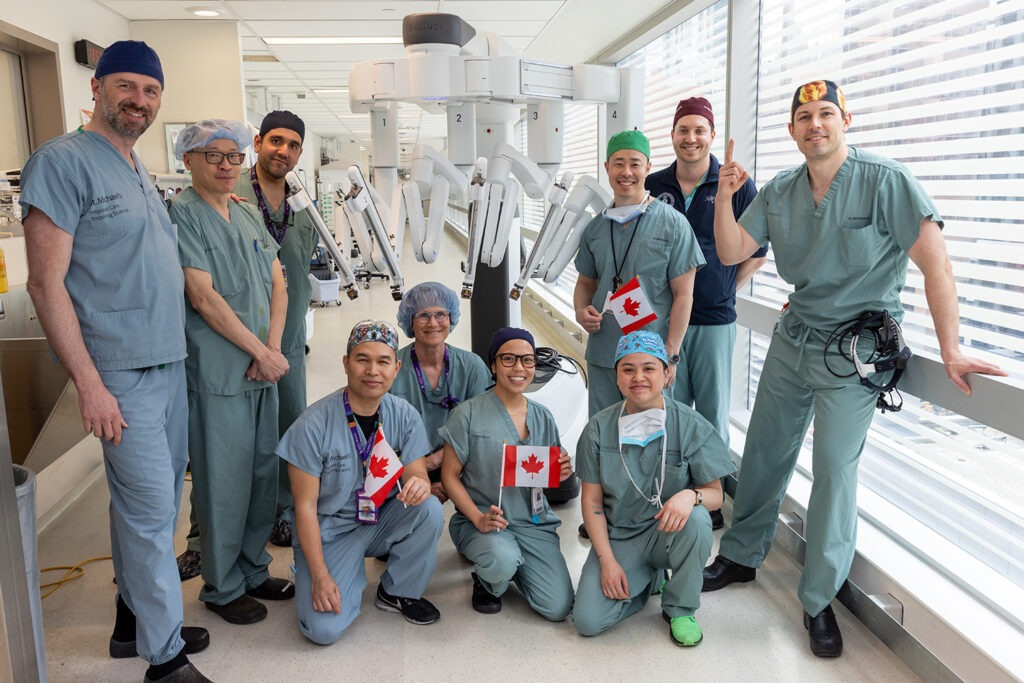
By Marlene Leung. Photos by Katie Cooper.
